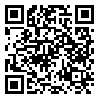Volume 11, Issue 2 (2007)
CLR 2007, 11(2): 107-126 |
Back to browse issues page
Download citation:
BibTeX | RIS | EndNote | Medlars | ProCite | Reference Manager | RefWorks
Send citation to:



BibTeX | RIS | EndNote | Medlars | ProCite | Reference Manager | RefWorks
Send citation to:
- -. Transfer, Assignment and Pledge of Bank Guarantees. CLR 2007; 11 (2) :107-126
URL: http://clr.modares.ac.ir/article-20-9510-en.html
URL: http://clr.modares.ac.ir/article-20-9510-en.html
Abstract: (8207 Views)
Abstract
It is recognized that, as a general rule, the beneficiary can assign his rights pursuant to the guarantee to a third party, with or without a specific stipulation to this effect. This rule is also endorsed in article 4 of URDG and article 10 of UNCITRAL Convention. It is expressly noted that assignment of the rights of the guarantee means assignment of the proceeds only, and that the assignee can not call the guarantee without the cooperation of the beneficiary. This is only different if the guarantee contains explicit provisions to the contrary. Such a stipulation would be extremely dangerous for the account party, since it virtually turns the guarantee into a negotiable instrument and the risk of a call, including a fraudulent call, will increase significantly.
Unless otherwise stated in the guarantee, the beneficiary is not entitled to transfer the guarantee in the sense that the transferee is able to call the guarantee independent from and without the cooperation of the beneficiary/transferor or in the sense that the transferee is entitled to request the issue of a second guarantee in his favour.
The beneficiary’s right to the proceeds of the guarantee upon a valid call is ordinarily also capable of being pledged, but this depends on the law that governs the guarantee. The approach of Iranian law to this matter is discussed in this article.
Keywords: Bank guarantees, Assignment of rights, Transfer of guarantee, Pledge of proceeds, Beneficiary’s right, Call of guarantee
Received: 2005/12/14 | Accepted: 2006/12/16 | Published: 2007/06/22
| Rights and permissions | |
 |
This work is licensed under a Creative Commons Attribution-NonCommercial 4.0 International License. |







